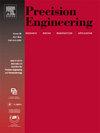基于深度确定性策略梯度的超声波功率自适应调整,用于超声波辅助沉模放电加工
IF 3.5
2区 工程技术
Q2 ENGINEERING, MANUFACTURING
Precision Engineering-Journal of the International Societies for Precision Engineering and Nanotechnology
Pub Date : 2025-04-15
DOI:10.1016/j.precisioneng.2025.04.013
引用次数: 0
摘要
超声辅助电火花加工(UAEDM)已经获得了广泛的应用,许多研究表明,在特定条件下,它有可能提高加工效率和表面质量。超声振动可以提高电极间的流动速率,从而提高排屑的去除效率。然而,由于放电过程固有的复杂性,很难在放电状态与超声振动之间建立精确的数学关系。因此,在整个加工过程中基于实时测量和放电状态统计的超声功率(振幅)自适应调节研究仍然有限。本文提出了一种新型的超声波功率自适应调节系统,用于模切电火花加工,利用在线测量和深度确定性策略梯度(DDPG),一种最先进的深度强化学习(DRL)方法。该系统利用深度学习强大的非线性映射能力,利用在线测量的二维放电信号作为模型输入,对超声功率进行动态调制。实验结果表明,基于ddpg的自适应系统优于固定超声功率方法,实现了更好的放电连续性。此外,伺服系统显著减少了收放伺服指令,最大限度地减少了伺服系统的反向运动,从而提高了整体加工效率。本文章由计算机程序翻译,如有差异,请以英文原文为准。
Ultrasonic power adaptive adjustment for ultrasonic assisted die-sinking electrical discharge machining based on deep deterministic policy gradient
Ultrasonic assisted electrical discharge machining (UAEDM) has gained traction, with numerous investigations demonstrating its potential to enhance machining efficiency and surface quality under specific conditions. Ultrasonic vibration is widely recognized for increasing the inter-electrode flow rate, which improves the removal efficiency of discharge debris. However, the inherent complexity of the discharge process makes it difficult to establish a precise mathematical relationship between discharge states and ultrasonic vibration. Consequently, research on the adaptive adjustment of ultrasonic power (amplitude) based on real-time measurement and discharge state statistics throughout the entire machining process remains limited. This paper presents a novel ultrasonic power adaptive adjustment system for die-sinking EDM, leveraging online measurement and deep deterministic policy gradient (DDPG), a state-of-the-art deep reinforcement learning (DRL) approach. By harnessing the powerful nonlinear mapping capabilities of deep learning, the proposed system uses two-dimensional discharge signals measured online as the model input to dynamically modulate ultrasonic power. Experimental results demonstrate that the DDPG-based adaptive system outperforms the fixed ultrasonic power method, achieving improved discharge continuity. Moreover, the servo system significantly reduces retraction servo commands, minimizing reverse motion of the servo system and thereby enhancing overall machining efficiency.
求助全文
通过发布文献求助,成功后即可免费获取论文全文。
去求助
来源期刊
CiteScore
7.40
自引率
5.60%
发文量
177
审稿时长
46 days
期刊介绍:
Precision Engineering - Journal of the International Societies for Precision Engineering and Nanotechnology is devoted to the multidisciplinary study and practice of high accuracy engineering, metrology, and manufacturing. The journal takes an integrated approach to all subjects related to research, design, manufacture, performance validation, and application of high precision machines, instruments, and components, including fundamental and applied research and development in manufacturing processes, fabrication technology, and advanced measurement science. The scope includes precision-engineered systems and supporting metrology over the full range of length scales, from atom-based nanotechnology and advanced lithographic technology to large-scale systems, including optical and radio telescopes and macrometrology.

 求助内容:
求助内容: 应助结果提醒方式:
应助结果提醒方式:


